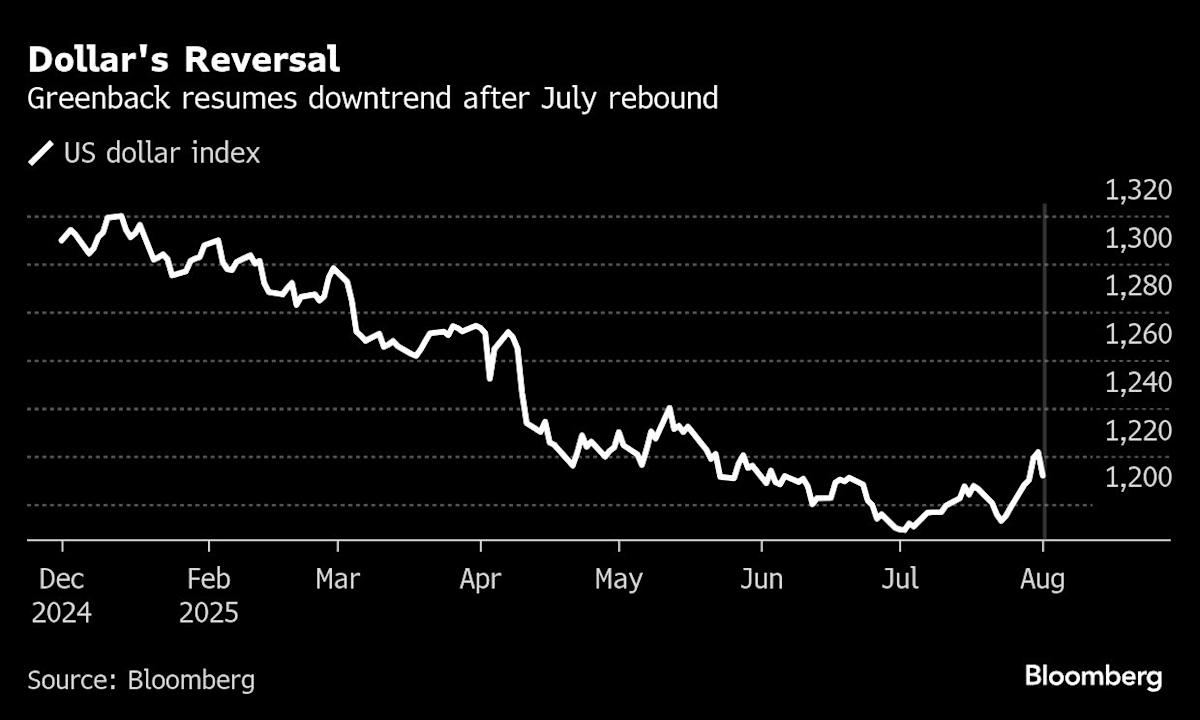(Bloomberg) — For months, Wall Street brushed off Donald Trump’s trade war and the Federal Reserve’s higher-for-longer stance — confident a resilient economy would keep propping up US markets.
Most Read from Bloomberg
This week, that confidence began to unravel. Weak job growth and Trump’s latest volley of tariffs rattled investors, intensifying pressure on Fed Chair Jerome Powell to lower interest rates and exposing a new unease with the White House’s protectionist push.
A three-month stretch of nearly unbroken market calm was shattered on Friday after a US report showed a sharp slowdown in the labor market. Traders rushed into the safety of government bonds — pushing down yields on two-year notes to 3.68%, the biggest one-day drop since December 2023 — while ramping up bets for a rate cut next month. The dollar fell and the S&P 500 Index continued its retreat from an all-time high, hitting its worst week since May.
“Today’s release is best characterized as ‘bad news is bad news’ in our view,” said Jeff Schulze, head of economic and market strategy at ClearBridge Investments. “With job creation at stall-speed levels and the tariff headwind lying ahead, there’s a strong possibility of a negative payroll print in the coming months which may conjure up fears of a recession.”
The lackluster jobs results prompted Trump to direct officials to remove the commissioner of the Bureau of Labor Statistics, accusing Erika McEntarfer of politicizing the data without any evidence.
“The US public statistics represent the gold standard,” said Neil Dutta, head of economics at Renaissance Macro Research. “Calling them into question because they tell you something you don’t like undercuts market confidence.”
Geopolitical tensions added to the risk-off tone across markets. Trump said he ordered nuclear submarines to be deployed “in the appropriate regions,” citing “highly provocative” remarks from former Russian President Dmitry Medvedev.
The market action marked a sharp reversal from July, when the dollar rallied, haven trades were abandoned and US equities outpaced their international peers, buoyed by robust earnings and a still‑healthy economy.
By week’s end, that narrative looks far more tenuous. Trump’s new tariffs — lifting the average US levy on global imports to 15%, the steepest since the 1930s — landed just as data showed that job growth averaged a paltry 35,000 in the last three months, the worse since the pandemic in part due to Trump’s efforts to pull back spending. The prospect for a slowdown caused traders to ratchet up the likelihood for a rate cut in September to 91%, up from 40% earlier this week.
Story Continues
